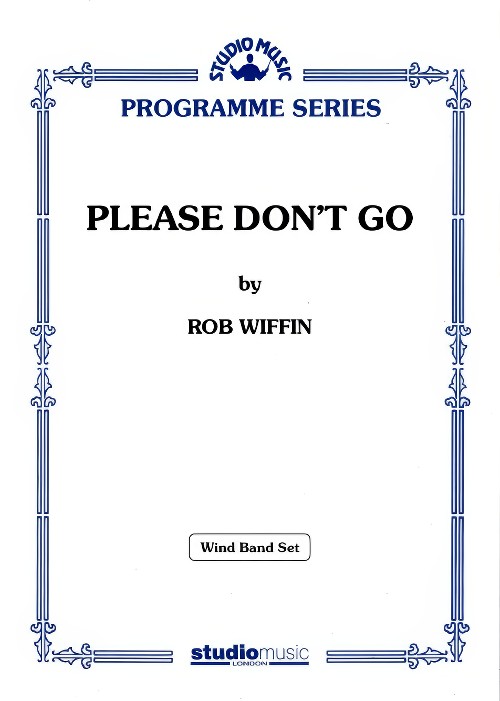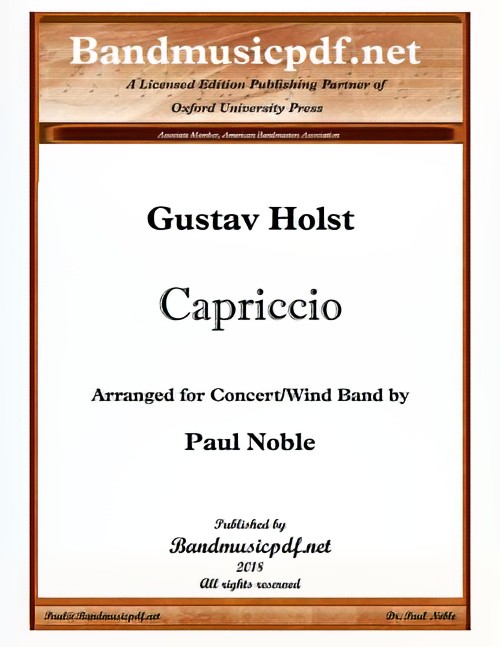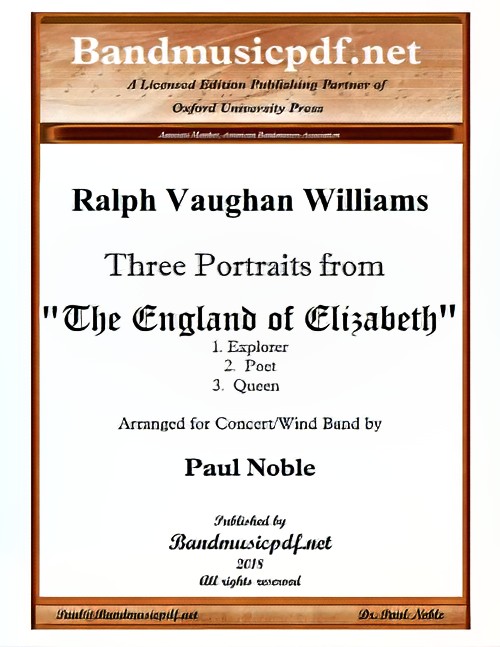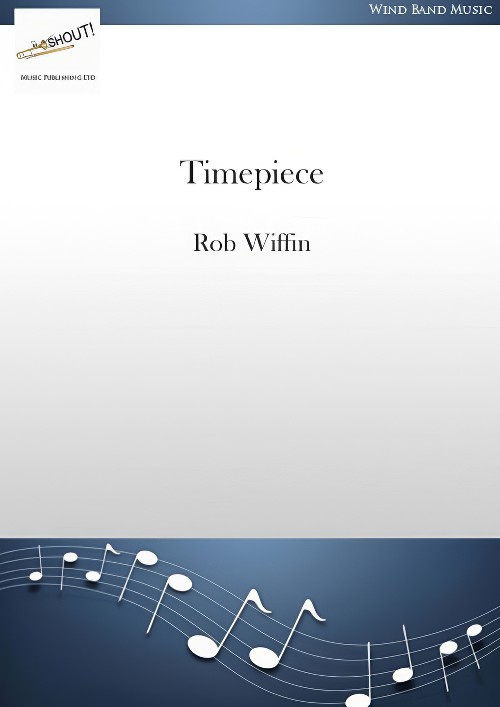Results
-
 £199.99
£199.99Suite Pastorale - Franco Cesarini
Suite Pastorale, made up of three movements - Idyll, Playful Shepherd Boys, Rain Upon the Fields - is characterized by an idealization of the simplicity of country life in close contact with nature. Suite Pastorale depicts the eternal and fascinating myth of Arcadia: a world in which man lives in harmony with nature, immersed in bucolic forest landscapes, one of the most important imaginary places to escape to for those who were, and still are, tired of culture and civilization. The evocative Arcadian world is made almost mythological by the attention dedicated to it by poets, writers, playwrights, painters, and composers who over the centuries have drawn lifeblood from it for their works. Full of metaphorical meanings, it is a place of shelter, a place to live and sing about love, even if it means disappointment, and it is the place of civilization opposed to barbarism. It is a symbol of happiness, a real and intact image of reality, motionless in space and time, where nothing changes. The myth of the "locus amoenus" has not disappeared but has kept all its charm intact over the centuries.Suite Pastorale was commissioned to Franco Cesarini by the concert band of Aldeno (Trento/Italy) for the 100th anniversary of its foundation (1923-2023.Suite Pastorale: an ideal concert piece that will delight your audience!
Estimated dispatch 7-14 working days
-
 £435.40
£435.40Continental Divide - Stig Nordhagen
The title is "Continental Divide" and it has nothing to do with tectonic plates, but is another word for "Watershed". It is the place where the the water flows in opposite directions. For example, when you drive up a mountain, the water flows downwards, the same does it when you drive down the other side. On top there is usually a water, and it is in this water, or musical idea if you like, that it is a continental divide. What I intend is that in this piece there are some musical motifs that change character and direction. They can be in the foreground and carry the play, or they may be in the background as a countermeasure. It can also be from horizontal lines to vertical. Orrhythmical patterns that dont find their match until far into the piece.
Estimated dispatch 7-14 working days
-
 £149.40
£149.40Answer Me, My Love - Fred Rauch
"Answer Me, My Love" was originally written with German lyrics by Fred Rauch and music by Gerard Winkler under the title "Mutterlein". Shortly after, Carl Sigman wrote the English lyrics and gave it the title "Answer Me, My Love" which is now the most famous version. It became a hit in 1953, but it was during 1954 that Nat King Cole recorded it and made it a chart-topper in both the US and Europe. In 2000 the Canadian composer and singer Joni Mitchell included it on her successful record album "Both Sides Now". Available solo parts in this arrangement: C-Instruments TC C-Instruments BC Bb-Instruments Eb-instruments
Estimated dispatch 7-14 working days
-
 £228.70
£228.70Pulsar - The Metamorphosis of a Star - John Brakstad
4th July in 1054 AD one of the most spectacular events was witnessed in the Cosmos. A massive star blew out; a supernova explosion.From the Earth it appeared as a new, bright star; the most brilliant in the sky. It was visible for three weeks, also in daylight, before it then faded away.But what was left of it is spectacular. Today we call it the "Crab Nebula".And in the very centre of the Nebula lies the remnant of the star; the core crushed by the force of gravity.This is a rotating neutron star, a pulsar, just 20 kilometres across, but so dense that it weighs more than our sun.As the neutron star spins, ejected particles stream out from its poles at almost the speed of light.These jets create powerful beams that sweep around as the star rotates.When the beams sweep across the Earth, they can be heard as regular pulses. We call them pulsars.In this piece there are three percussion parts. In addition there is an "optional part" to replace the marimba and vibraphone written in the three original percussion parts if desired. This fourth part is shown in the full score.
Estimated dispatch 7-14 working days
-
£159.99
Fantasia Per La Vita E La Morte - Bert Appermont
The mystique surrounding life and death formed the starting point of this composition. I wanted to write a work without a story, mixed up in a kind of musical quest for a new world of sound, original rhythm sequences, melodies filled with suspenseand distinct orchestral tones.The indirect cause was the birth of my first child which took place during this time, followed by the death of a close family member. At such a moment you experience just how close life and death are to each other, anddespite one being the antithesis of the other, they are incredibly similar. Both radical events are passages into new worlds and have great emotional impact. Moreover, the work was commissioned by "New Life", an orchestra that lost one of itsmusician in a plane crash, which also led me to believe that this approach would be appropriate.I would prefer not to comment on which passages in the composition concern life (birth) and which refer to death. It seems to me that it is moreinteresting to question traditional conceptions and leave it open for the listener. If you think that a passage is about birth, and this idea then shifts, it is this that raises fascinating questions, on both a musical and metaphysical level.Music isin an indirect but incredibly persuasive way in which to express the endless striving and seeking of mankind. Music can even touch eternity, as it were, and give us the feeling that we can transcend death. This endless search (and also longing) canbe heard throughout the work; as much in the sound fields and accent shifts in the first part as in the enormous tension curves and compelling themes of the second part. The semi-tone functions in this way as a guide or something to hold on to,running through the whole work and upon which much of the musical material is based. Traces of profound love resound with quiet simplicity in the slow section's melodious solos, after which the work contemplates life and death one last time, musesupon joy and sadness, on the possibilities and limitations of people and on the why of all things.I would like to dedicate this work to my dearest daughter Paulientje, to Meterke and to Johan de Jong of the "New Life" orchestra. May it fare themwell, here or in another dimension...
Estimated dispatch 7-14 working days
-
 £16.95
£16.95Please Don't Go (Concert Band - Score only) - Wiffin, Rob
There could easily be a backstory for this piece. It is ostensibly a Latin dance at samba tempo but it is slightly tinged with a sense of wistfulness and heartache and it is easy to work out where the imploring words of the title Please don't go fit into the melody. It is not technically difficult to play although it needs an appropriate sense of style and rhythm. Parts are comprehensively cued and the piece works without a bass guitar although it is desirable if possible. Similarly, not all the percussion instruments are vital although they add considerably to the feel of the music if you have them.
Estimated dispatch 7-14 working days
-
 £82.95
£82.95Please Don't Go (Concert Band - Score and Parts) - Wiffin, Rob
There could easily be a backstory for this piece. It is ostensibly a Latin dance at samba tempo but it is slightly tinged with a sense of wistfulness and heartache and it is easy to work out where the imploring words of the title Please don't go fit into the melody. It is not technically difficult to play although it needs an appropriate sense of style and rhythm. Parts are comprehensively cued and the piece works without a bass guitar although it is desirable if possible. Similarly, not all the percussion instruments are vital although they add considerably to the feel of the music if you have them.
Estimated dispatch 7-14 working days
-
 £140.00
£140.00Capriccio (Concert Band - Score and Parts) - Holst, Gustav - Noble, Paul
The following notes have been excerpted by the arranger from those presented in the Introduction by Imogen Holst, daughter of Gustav Holst: Holst wrote this work in the spring of 1932, while he was guest Lecturer in Composition at Harvard University. He had been asked by Nathaniel Shilkret to write 'a short radio piece, not longer than five or six minutes.' for a composers' series on folk music themes. Holst wrote to me on 13 May 1932, saying: 'On May 1 I started sketching a piece for Shilkret's Radio jazz band in New York. I finished the sketch on the 4th and the full score on the 8th... Shilkret wanted something on American airs but I've left them out because I prefer my own so he may reject the thing.' Shilkret was enthusiastic about the piece, but he was unable to use it for his series. 'I hate to give it up,' he told the composer, 'but I cannot play it because it is not based on a definite English or American folk theme.' Holst never revised his hurriedly-written work, probably because he had too many other things to write during the remaining two years of his life, when he was having to spend a good deal of his time in hospital. The autograph manuscript of his original full score is in the British Library, MS Add.47833. The work had no name: Holst referred to it either as his 'Jazz band piece' or as 'Mr. Shilkret's Maggot.' The score needed editing. There were gaps and patches, with incomplete dynamics and phrase marks. I made the version for orchestra and named it 'Capriccio' in spite of the viola's (now saxophone's) expressive opening, because from the moment of the marimba's first animated remark there can be no doubt about the mood of the music. - Imogen Holst (1968)
Estimated dispatch 7-14 working days
-
 £250.00
£250.00The England of Elizabeth,Three Portraits from (Concert Band - Score and Parts) - Williams, Vaughan - Noble, Paul
This suite was derived from Vaughan Williams' score for the film, The England of Elizabeth, written in 1955. It was the composer's tenth of his 11 cinematic efforts and designed to serve a more descriptive role than other such scores, since the movie was a documentary featuring no action scenes, but lots of images of paintings, buildings, and the like. Composer Muir Matheson adapted this three-movement suite, probably shortly after the composer's death in 1958, though publication of the manuscript would not come until 1964. The first movement is entitled Explorer, and refers to Sir Francis Drake. Its music is mostly festive and colourful, but features interior passages of exotic flavor, similar in style to that of Vaughan Williams' then-recent Symphony No.8. The second movement is entitled Poet and, at about seven minutes, is the longest of the three in this 16 to 17 minute work. It also contains probably the score's best music, hardly a surprising result since the poet in question is Shakespeare, one of the composer's favourites and an inspirational springboard for so many other of his works. The mood is mostly subdued and Vaughan Williams presents lovely, if slightly somber music in the opening, and follows it with a hearty, folk-like dance tune. The latter part of this movement depicts Shakespeare as a noble, heroic figure in English history. The last movement, Queen, is devoted to Queen Elizabeth. It has a regal yet muscular manner at the outset, and features a gentle but somewhat disengaged middle section. It returns to the splendor and colour of the opening to close the work. This suite is important because it distills some of the best music from the film into a logically assembled structure. Program notes extracted from those of Robert Cummings.
Estimated dispatch 7-14 working days
-
 £79.95
£79.95Timepiece (Concert Band - Score and Parts) - Wiffin, Rob
Timepiece is a challenging work full of driving rhythms and relentless energy. It started life as the first movement of The Sands of Time, a commissioned work for clarinet choir. Because of the time limits of the commission, Wiffin could not develop the material as much as he had wanted to. He rescored it for wind band and included it as the first movement of a suite, but it did not sit well there because of its difficulty. Now re-worked and extended, the driving rhythms and many changes of time that give the piece its name are now balanced by a quieter, tranquil central section in 3/4. It is not easy, but most of the difficulty lies in the reading of the music rather than in any particular technical problems. It is recorded on on the RAF CD, Music in the Air.Duration: 6.15
Estimated dispatch 7-14 working days
